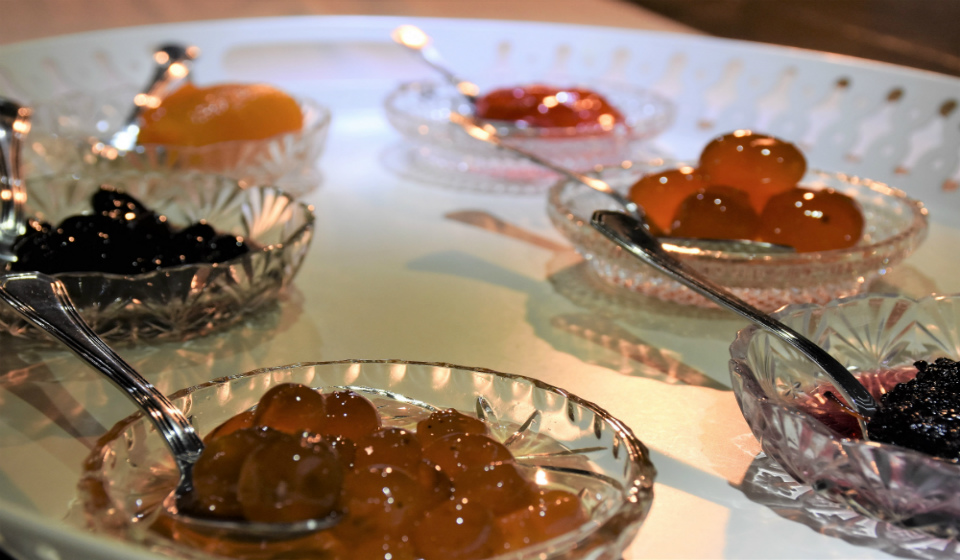Local products
Introduction
Ithaca is characterised by simplicity and authenticity. The island’s products, its cuisine, and its artefacts share exactly the same qualities.
The type and chemistry of the soil, the climate and the methods of cultivation and production have retained their traditional character to a great extend, making the agricultural and livestock products of the island unique and valued because they are organic and come straight from the producers.
The existence of ancient olive groves, the continuation of ancient ways of making cheese as well as the methods of processing and preserving food indicates the interest of the inhabitants in the primary production. Just like tourism, the farming, livestock and fishing practices are still small scale, with respect for both the environment and the consumer and as a result Ithaca is a self-sufficient island in most foodstuffs. This enduring sense of self-sufficiency and the consequent attention to management are strongly reflected in the local cuisine with simple recipes noted mainly from the quality of ingredients rather than the preparation of the dishes; and that’s the true essence of the Mediterranean cuisine.
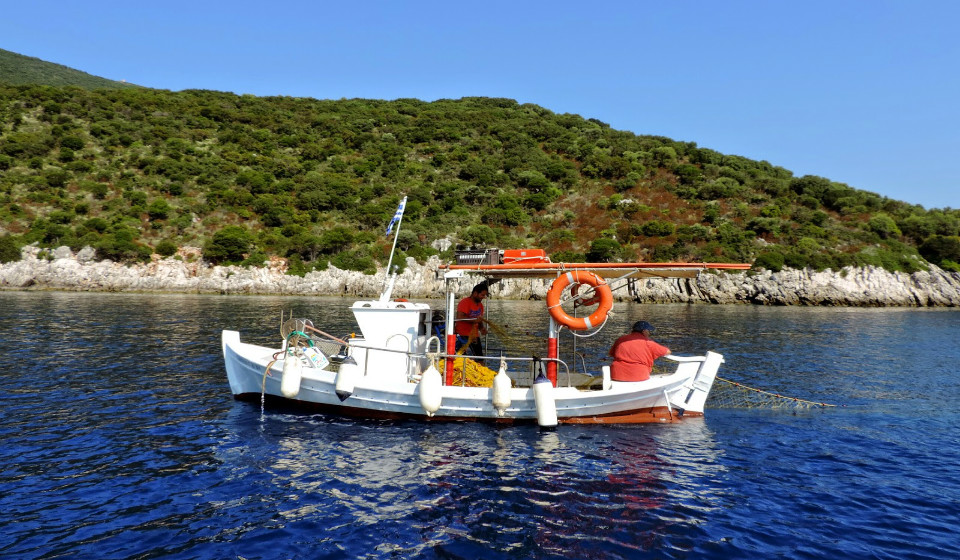
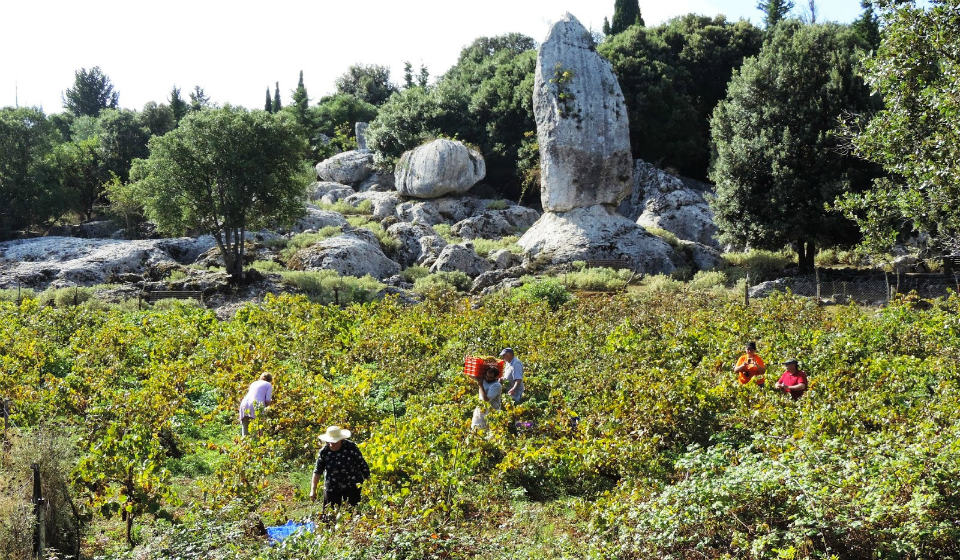
The extra virgin olive oil from a local variety of olive trees and the family wines from indigenous vine varieties are the main products, the focus of the labour of local producers. They cultivate the land mainly for their own needs, but there is always something put aside to offer to the guest!
Herbs, honey, meat and cheese, fruit preserves as well as some special foods and desserts have always attracted the visitors to the island who not only taste them on the spot, but also take them along when they leave the island.
Ithaca has always been a favourite destination with intellectuals, aesthetes, artists and, generally, cultured people, Perhaps it is this continuous flow in the community, perhaps it is the mystique of the place, ideal for thought, reverie and creation, that has spawned a literary and artistic school in Ithaca, which is actively present both within the island and in the modern Greek cultural and artistic scene. Books by Ithacan writers, poets and scholars, seascape and ship paintings and other artefacts by local artists made from natural materials found on Ithaca, such as briar wood and shells used for painting on, glass and driftwood set on jewellery and other alternative materials, all these comprise a wide range of objects that a visitor finds particularly interesting to look at, admire and buy.
The women of the island, skilled artists themselves in Venetian lace, loom weaving and cutwork embroidery, exquisite arts which are unfortunately vanishing, add their own projects in the artefacts. Lace curtains, white cutwork embroidery and needlework objects gracefully adorn old buffet cabinets, lounges and bedrooms.
Little treasures from a great place…. Let’s look at them individually.
Ithacan olive oil
Ever since the Odyssey, the olive tree has been an Ithaca signature….
“But come, I will show you the land of Ithaca, that you may be sure. This is the harbour of Phorcys, the old man of the sea, and here at the head of the harbour is the long-leafed olive tree…” says the Goddess Athena to Odysseus, who has just arrived in the harbour of Phorcys, so as to convince him that he has reached his homeland at last. And when the moment of retribution comes , leaning on an olive tree , symbol both of strength and consolation , Odysseus and Telemachus organize the terrible slaughter of the suitors …”Then the two sat them down by the trunk of the sacred olive tree, and devised death for the insolent suitors. ‘
Several varieties of olive trees are cultivated on Ithaca, but a native variety is the most widespread tree, called by many different names, thus indicating its long relationship with the island’s inhabitants: the “local” olive tree, or “Thiakia” or “Anoisana” or “Plexidenia. It is a sturdy tree which produces a perfectly round, juicy fruit!
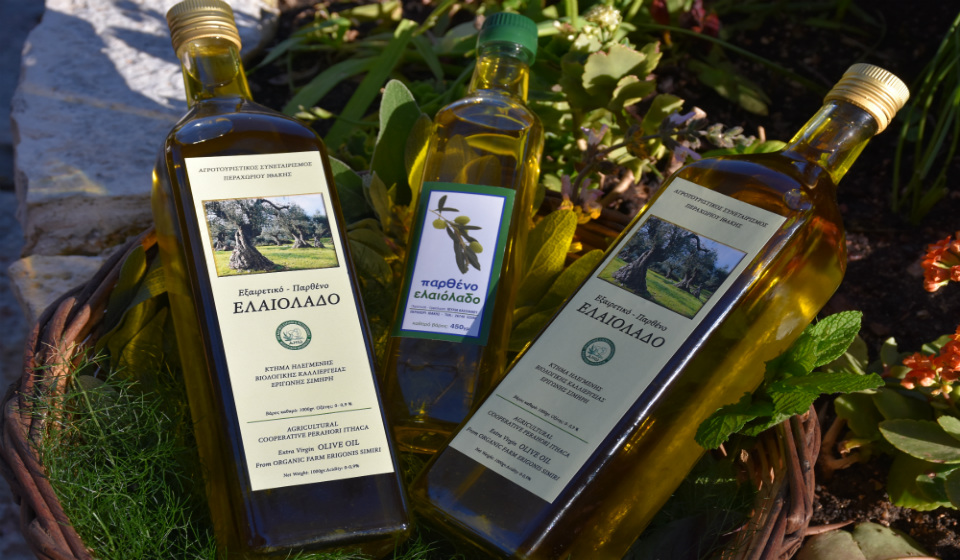
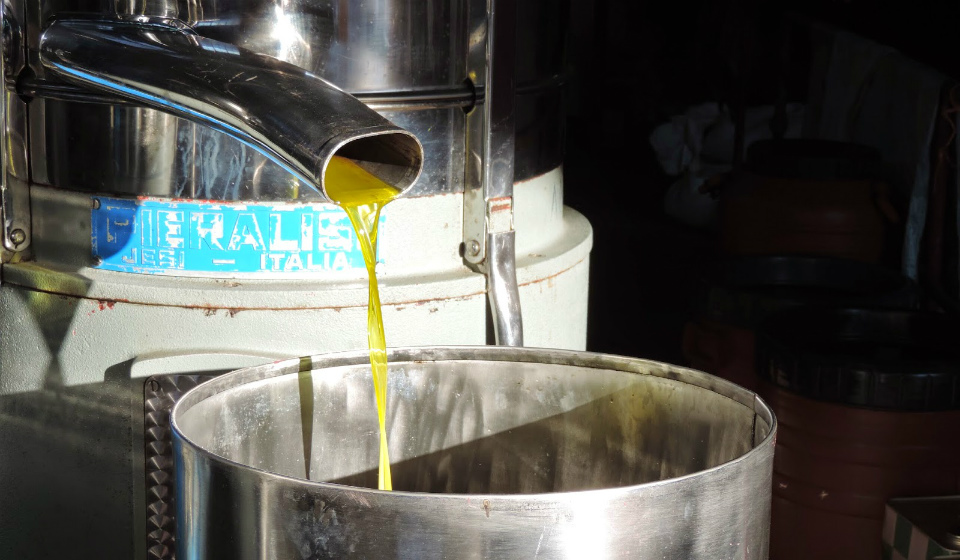
As the island is ideal for hikes, the eye of the visitor can easily distinguish this indigenous variety which grows to become rather tall, up to 8 m and spreads everywhere with long, side branches, claiming a lot of space in the olive grove! These features, and the fact that this olive tree gives fruit every other year, makes oil producers not to prefer it as their main crop, but its presence is dominant on the island and its acclimation through centuries wonderful. Moreover, it offers so much … it has completely adapted to the weather and soil conditions of Ithaca, it is highly resistant to disease, does not need watering and its fruit, though small, gives particularly tasty oil ( content of 20% -22%). In addition, it seems that despite having existed for ages on other Ionian islands too, notably Kefallonia and Corfu, this native olive tree has found its permanent home on Ithaca, prevailing among the tree population, with greater density in Marmakas where most of the oil on the island is produced. Many of the traditions of Ithaca are associated with the “Thiakia” olive tree.
Most important among them is the olive harvest, which starts the day after the feast of Agios Gerasimos, on 20 October. The harvest, ” mazoma”, was traditionally done climbing on ladders and collecting the olives by hand. Later on, people used “grampaounes”, special combs that threw the olives on canvases spread around the tree. This method also required “xerkartarisma”, selection of the olives by hand. In the old days, the residents gathered their olives themselves; there was the habit of staying in huts scattered among the olive groves until they “xemasoun”, (finish collecting the olives), which in itself gave the olive harvest a strong social dimension. Especially in the Marmakas region, oil production was so well organized that the oil press mill was very close to the grove so that people could go home with their oil: hikers can still see the mill stone in the ruins of such a mill in Lakkos in Marmakas in Northern Ithaca.
So valued and recognised was Ithacan oil by both locals and by people in neighbouring areas that it had become a precious item of barter, exchanged not only for other products but for animals as well. Nowadays, Ithacan oil is still of high authenticity and quality. Although the methods of harvesting and processing of the fruit have changed, much of the required work is done by hand, such as the combing of the large branches and the first selection of the fruit. The rest of the process has now been transferred to the responsibility of the oil pressers, the “litrouvio” as it is called in the local vernacular. 500 kilos of the fruit produce 100 kilos of oil; it is tasty and nutritious, worth of all the effort and the cost!
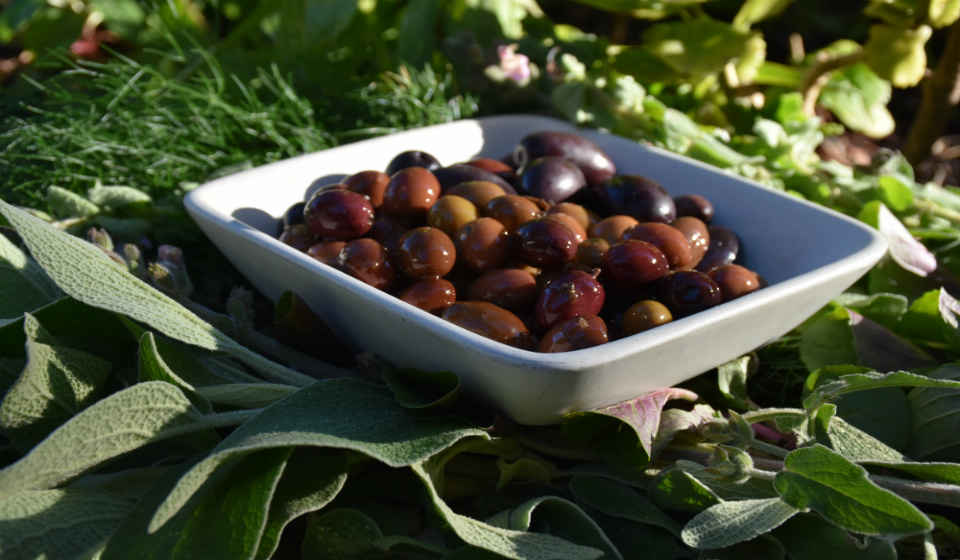
Ithacan Wine
If the oil is the pride of Ithaca, its wine is the essence of the people’s character and sociability! On the island you may drink two wine varieties, the “Mavrodafni” and the “white”. However, things are not as simple as they seem as Ithaca is distinguished by a very large and very interesting biodiversity regarding the vine and the grapes.
Traditionally Ithaca viticulture has had a strong personal character as the old cultivators of the island were very open to learning and experimenting. This resulted in the creation of a particularly interesting palette of vine and grapes varieties. There are 16 native varieties, some of which are excellent, while we find three of the rarest almost disappearing natives of the Ionian varieties which withstand time having chosen Ithaca to fully acclimatize and stay! And if Marmakas in Northern Ithaca, was – and still is – the largest oil producing area of the island, Perachori, in Southern Ithaca, is the safe homeland of some of the most beautiful and rare vines of the Ionian Islands! It is no coincidence that every year, in late July, Perachori hosts a great wine tasting festival, the Wine Festival of Ithaca, offering plenty of free wine all through the night to the visitors who revel.
From the 16 indigenous vine varieties of Ithaca, very few produce varietal wine (from one grape variety), as the vines are few and generally give small productions. This adds value to Ithacan wine, since the blending from more than one variety of grapes requires experience, knowledge and passion. Ithacan wines are bottled by the producers themselves, in small bottling installations with the proper specifications and part of them is marketed. They can be found in the updated liquor stores and cellars of Ithaca and Kefallonia or they can be ordered in advance, directly from the producers.
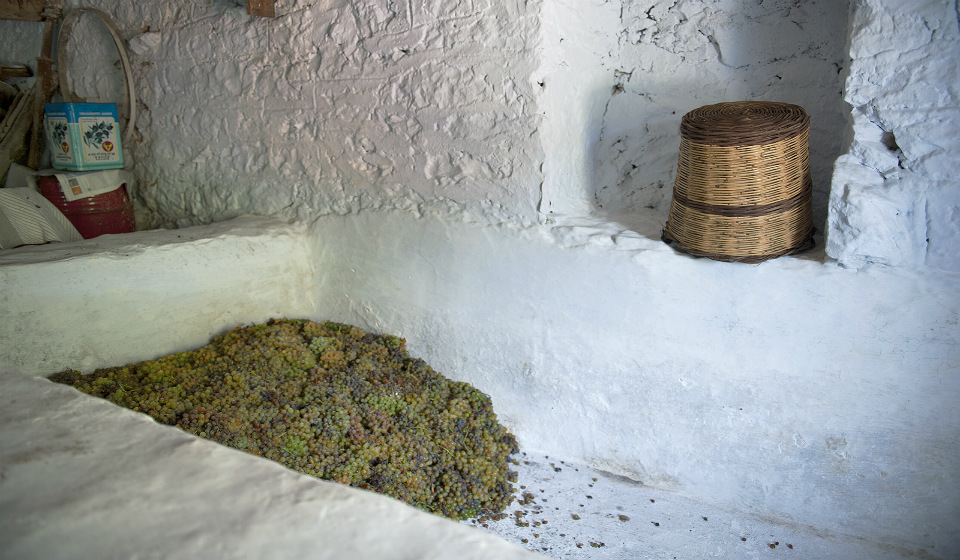
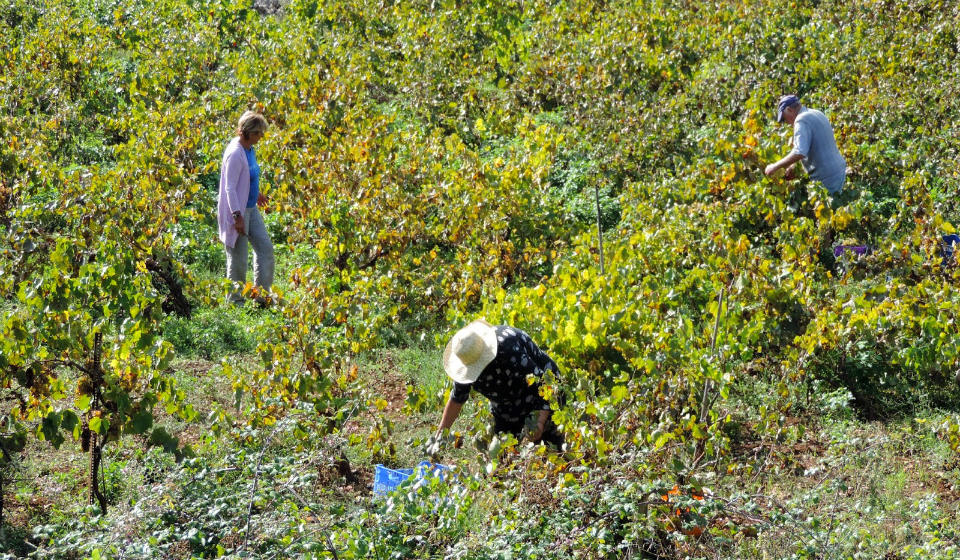
The “Papadiko” is the most popular vine variety in Ithaca, a short plant whose grapes are eaten fresh as table grapes or are used for winemaking. The “Avgoulato”, an excellent vine, also gives fruit for both uses while “Koritsanos”, the highly productive variety native in Perachori gives a delicious white wine. The “Goulina”, another variety in Perachori, is a highly productive vine renowned for its resistance to disease and its distinctive aroma. Most indigenous vine varieties produce white fruit and white wine, except for “Mavroudi”, which gives black grapes. It is found in small numbers in the vineyards because it is easily infected by diseases, but it is excellent for blending. Another great vine variety in Ithaca is “Kotsilia” from Perachori, indigenous and old, which gives a full white wine. The “Koufaki” produces excellent table grapes in strong clusters, of medium size, with a slightly sour flavour and is mainly used as a blending wine together with other grapes. Among these native varieties we must include “Boubouli”, not a particularly productive variety, but it produces good quality white grapes and creates a remarkably dense vegetation in the vineyar
In Ithaca and specifically in Perachori we can find vines from three native varieties which are threatened with extinction: the “Skylopnikti”, an excellent variety of vine giving black grapes, but white wine, a variety of great strength, almost unaffected by disease ; the “Cretan”, a most rare indigenous variety, an impressive plant with long stems and white grapes, which gives white wine and is always blended with other grapes to produce wine; finally there is the “Xynopodia”, a productive vine with bright green foliage and nice thick grapes in large clusters. As it has seeded fruit it is mainly used for winemaking, but due to the large size of its berries it can also be eaten fresh.
In the little gardens that surround the houses in the villages of Ithaca we find the indigenous grape varieties “Mavro Aetonychi”, “Tourkopoula”, a seedless variety, probably some kind of raisin, the “Eftakilo”, seeded with large fruit , suitable for winemaking and “White Aetonychi” with large clusters of delicious grapes. Finally there is “Chontromavrodafni” in Perachori, a relative of “Mavrodaphne”, used both for making wine and eaten as table grapes.
Although they are not easily available due to limited production, the “Thiako” wine and “Mavrodafni” are served in several restaurants in Ithaca. It is worth asking for them!
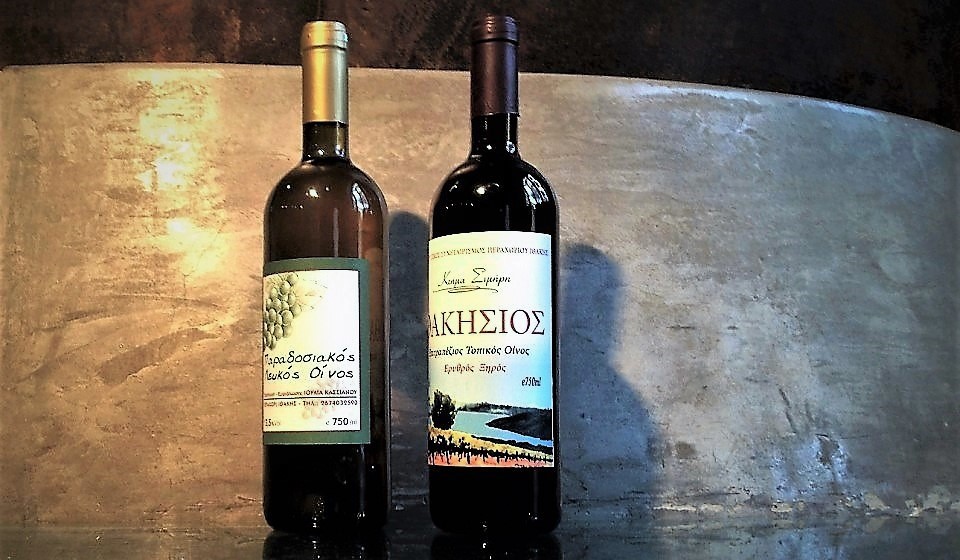
Ithacan Herbs
Ithacan women have a deep knowledge of herbs and are highly engaged in collecting them, storing and using them for both pharmaceutical purposes and cooking. The soil is perfectly suitable for growing herbs, it is mountainous and rocky, while the microclimate favours quality and variety. Many herbs are abundant in Ithaca and rational collection has retained their biodiversity intact for almost a century. Many of the Ithacan herbs are integral ingredients of local recipes, whereas combinations and special local recipes – “ rechettes “ ensure highly nutritious drinks, with emollient and antioxidant action for the winter!
Among the herbs of Ithaca that stand out for their quality and fragrance are sage, thyme, rosemary, chamomile, lemon balm, mint and “sapsychos”.
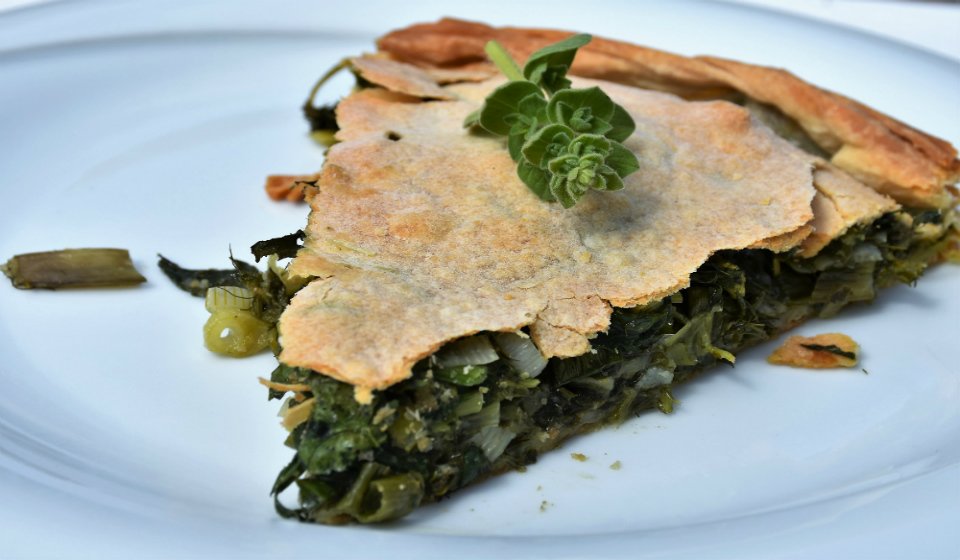
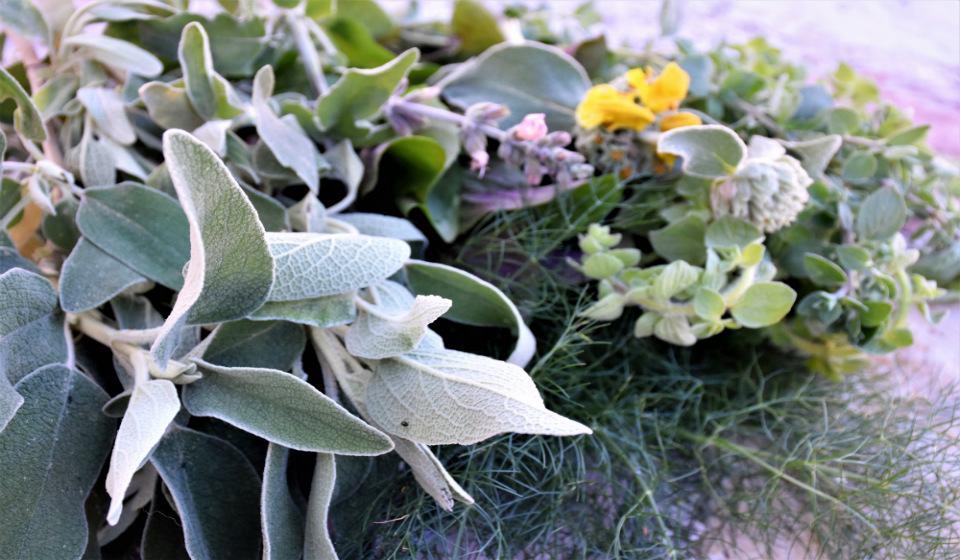
Sage –“ alifaskia” is everywhere in Ithaca and it is widely used as medicine for the mouth and throat, as a natural painkiller for any kind of pain, as an invigorating drink , or for seasoning local recipes, especially meat pie. Thyme is mainly used dried in cooking, for flavouring spicy dishes, while rosemary gives aroma, preserves meat and fish dishes and is also added to a number of sweets. The sapsychos plant is closely related to oregano, with a different flavour, a favourite with Ithacan cooks, who grow it in pots in their backyards throughout the whole year. There is no dish of Ithacan cuisine that cannot be flavoured with “sapsycho”. Wandering on the hills of the island you will certainly distinguish its pleasant aroma!
The local beverages are chamomile, tea and mint. They are served almost everywhere, but it is advisable to ask whether there is a local variety of what you order and if it is what its name says, or a blend! The reason is simple, when an Ithacan says “chamomile” he actually means a fragrant blend of chamomile, sage and dried cloves! All this and more can be found in books with local recipes, written by Ithacan housewives, gourmets and visitors who have been inspired and have experimented with aromas of “Thiaki “!
Ithacan Feta cheese
There is a local breed of sheep, the “reddish sheep”, whose characteristics resemble those of the Syrian sheep breed, the common ancestor of all breeds of sheep in South-eastern Europe and the Middle East. Its milk is used for a small feta cheese production which follows a traditional process. The cheese is available seasonally at grocery stores on the island and it is also served at some restaurants, particularly in Northern Ithaca. It is worth tasting it!
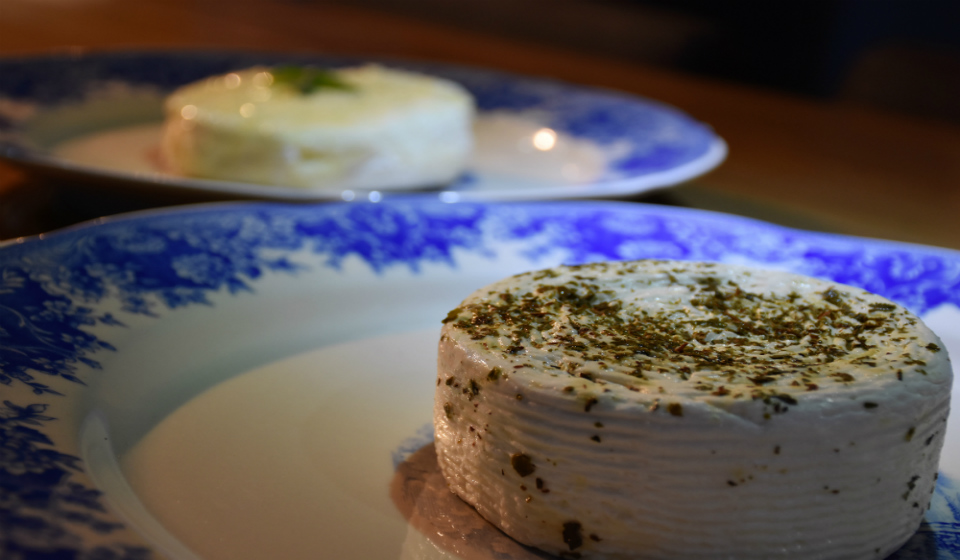
Ithacan Honey
On Ithaca there are forests with conifers, thyme, flowers and herbs all year round so it is only reasonable that the Ithacan honey is abundant and excellent. So far the families had taken care of their own production which was usually not enough to trade. In recent years the interest in beekeeping has risen sharply, as many now participate in the seminars by the beekeepers Association of Kefallonia and Ithaca, in Argostoli , supervised by the University of Athens. Old beekeepers, young people with an interest in organic farming, but also professionals in food processing and catering obtain methodical knowledge and experience, so that the label “Pure Honey of Our Own Production” has exactly this meaning!
What distinguishes the honey of Ithaca is its aroma. This is due to the multiplicity of the sources of pollen available to the bees of the island and especially to the queen of herbs, the sage. Look in local groceries and summer bazaars in the square of Vathy. The Honey of Sage will flavour your autumn days!
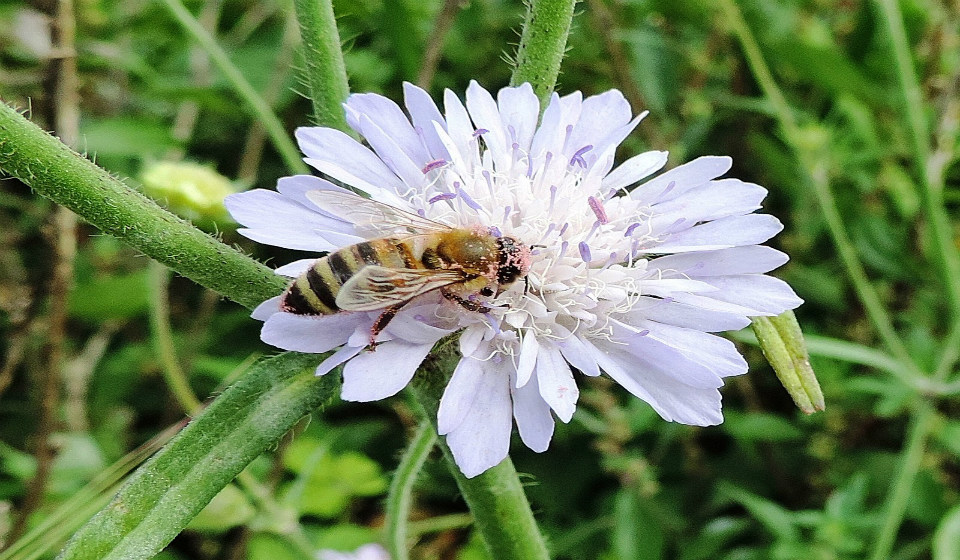
Sweet fruit preserves
The expert in sweet fruit preserves of Ithaca is the Agricultural Association of Perachori! The Agricultural Association deals with standardization, production of special local products such as honey and sapsycho, culminating in their traditional art of Ionian sweet fruit preserves! Grated quince, bitter orange, fig and berry preserves are the prevailing kinds followed by delicious cranberry, pear, and quince jams from an endless variety of local fresh fruit and sage honey!
The taste has no limits!!!
